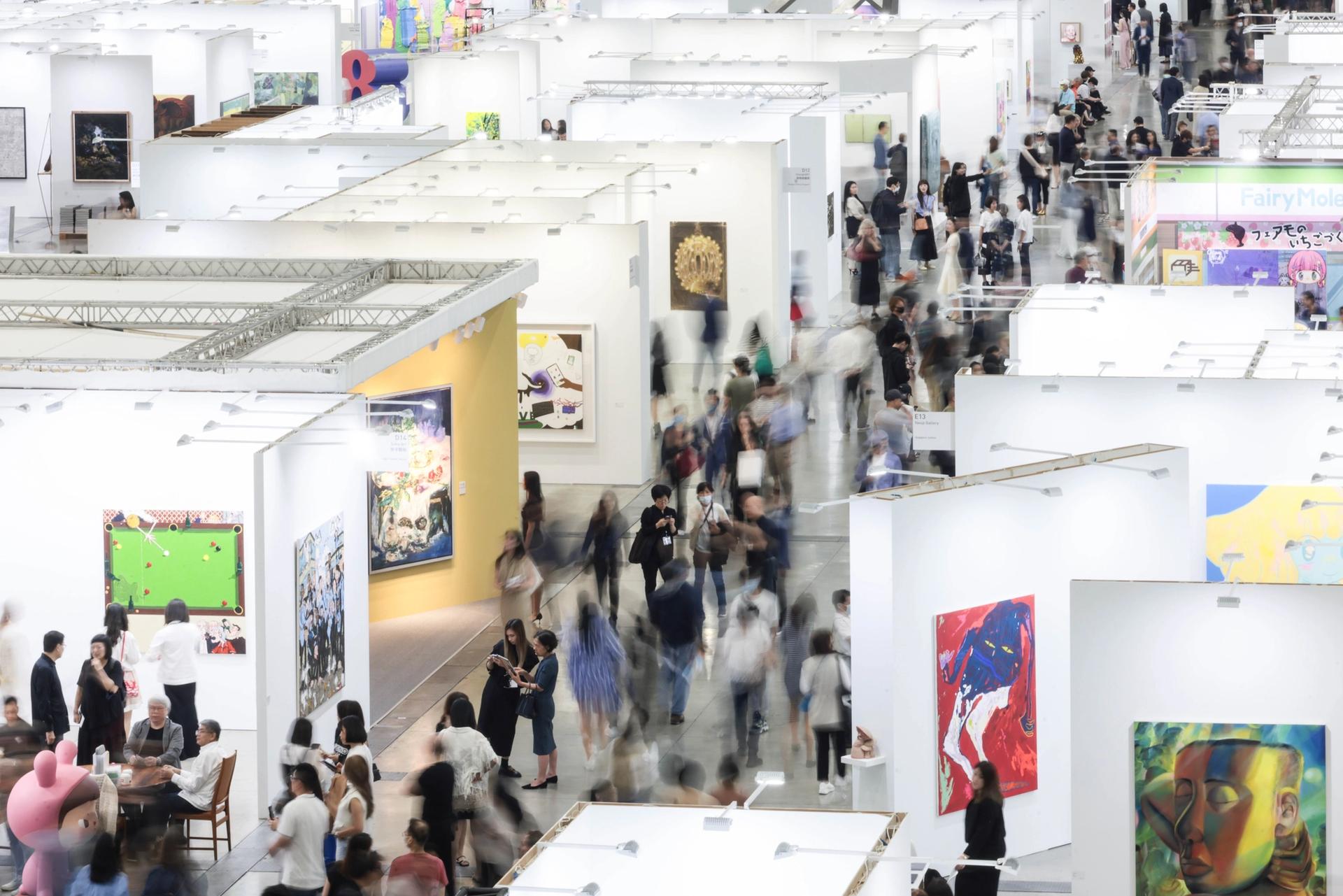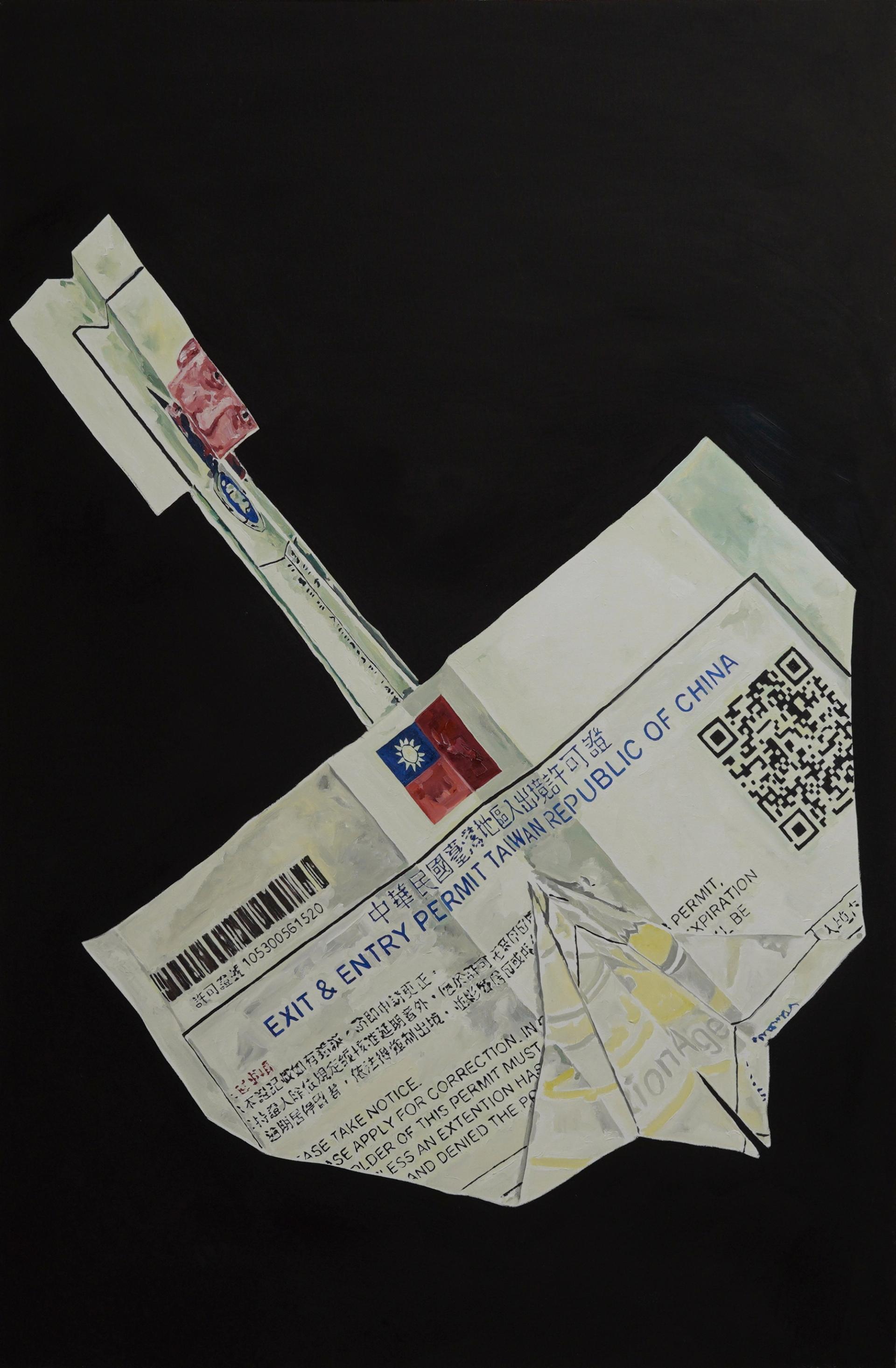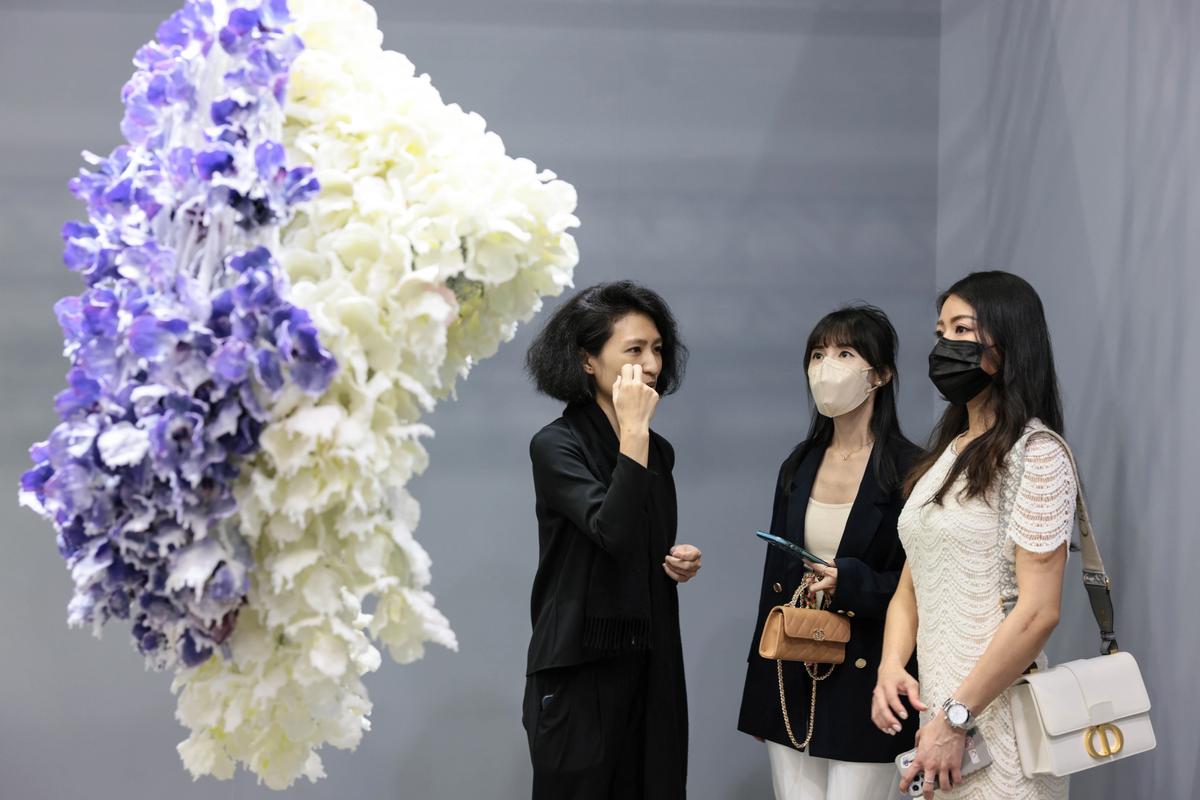Taiwanese dealers and collectors are quick to emphasise that it is normal to sell slowly during the opening days of Taipei art fairs. And so it is at the fourth edition of Taipei Dangdai (until 14 May), where despite upbeat energy and thronged corridors of the Nangang Exhibition Center, most dealers reported promising exchanges, but few big initial sales. This is the fair's first edition since the East Asian island reopened its borders, and it sees some 90 galleries take part, including almost 30 for the first time; more than 60% of exhibitors have a space in Asia Pacific.
"Collectors here are very thoughtful, conversations can take longer although we have already placed great work by Erwin Wurm and Chantal Joffe," says the Lehmann Maupin director Shasha Tittmann. "It’s great to see younger collectors driving the appetite for contemporary art here."
Yesterday's preview drew collectors from Taiwan such as Jenny Yeh, Rudy Tseng and Maggie Tsai, while those from abroad included Alan Lo, Timothy Tan, Yurina Roche and Jackson See.

Local collectors thronged the aisles of the Nangang Exhibition Center
But the relatively slow pace of preview day sales can be attributed to more than just the local collecting culture: Taiwan’s economy contracted 3.02% year-on-year in the first quarter of 2023, and like much of the world it is seeing living costs spike compared to incomes. While the Taiwanese economy is still projected to grow 2.01% for the entire year, that marks a dip from 2.5% in 2022 and 6.3% in 2021. Some dealers also surmised that the Taipei Dangdai's timing, shortly after Art Basel in Hong Kong and conflicting with New York's fortnight of spring fairs, also impacts sales.
Painting dominates the fair hall, with modern and contemporary ink works nodding to the Taiwanese appreciation of Asian traditional forms. From Hong Kong, Lucie Chang Fine Arts have brought the prominent protest street calligraphy of the late outsider artist Tsang Tsou-Choi—better known as the "King of Kowloon"—and Hanart TZ, also from Hong Kong, brought works by the critically overlooked late ink master Yeh Shih-Chiang, plus photographer Yeh Weili’s documentation and book about the painter. At Galerie du Monde, the charged politics of Greater China find expression in Tang Kwong San's 2023 painting Paper Airplanes, about a Hongkonger dreaming of an elusive migration visa to Taiwan, and Guanyu Xu's 2022 photograph RK-08282018-01142022, part his Resident Aliens series about Chinese nationals who got stuck abroad during the pandemic years.

Tang Kwong San's Paper Airplanes (2023)
Courtesy of the artist and Galerie du Monde
A few galleries did experience brisk opening sales, including Galleria Continua, which sold Antony Gormley’s 2012 cast iron work Join for between £450,000 and 500,000. De Sarthe Gallery also sold Wang Jiajia’s 2023 painting It Won’t Ever Get Old, Not In My Soul for £20,000 to a private collector in China. Jack Bell Gallery sold Andrew Maughan’s 2022 painting Prepper for £10,000.
“The sales from local collectors are stabilising,” says Huang Yaji, the founder and director of Taipei gallery Each Modern. By the end of the fair's second day, the gallery had sold Antonia Kuo’s 2023 chemical and light painting Nocturne for $20,000 and Wu Mei-Chi’s 2023 digital c-print with Diasec 2 Garden 2 for $4,000, both to Taiwanese collectors. She says the network of Asian fairs run by Taipei Dangdai founders The Art Assembly are helping to pull collectors from around East and Southeast Asia to the event.
Participating galleries primarily focus on Taiwanese collectors, says the fair's co-director Magnus Renfrew, but natural interactions with Japan and South Korea occur due to the proximity and shared colonial histories of the nations. Mainland Chinese collectors and exhibitors alike have been dented by visa restrictions, though Hong Kong representation has remained energetic. The Taiwan art market is “regional on purpose,” says Renfrew. “I think regional should not be a dirty word. It’s a big region. Asia is home to half the world's population.”
Renfrew observes in Taiwan a young, curious generation of collectors, “getting very involved and very curious.” He says that the pandemic has accelerated a generational shift of younger Taiwanese taking the reins of family businesses and a transition of power and wealth, concurrent with a “big acceleration towards Asia."
The local market remains "quite vibrant" for more traditional art forms, says Chi-Wen Huang, who founded her eponymous Taipei video, installation and performance gallery in 2004. The gallery is not participating in Taipei Dangdai. It is currently screening How Was History Wounded, which includes films by Yu Cheng-Ta, Wang Jun-Jieh and Cheang Shu-Lea. Chi-Wen says she is not taking part in the fair as she wants to focus on international audiences and institutions. Escalating rhethoric between America and China over Taiwan, which the mainland claims territorially, has also heightened global interest in Taiwan’s lively avant-garde. "Because of the current geopolitical situation of Taiwan, we do see an increased interest in Taiwanese film and video, which we regard as a unique opportunity to grow international awareness for Taiwanese film and video art,” she says.
Nonetheless, "within Taiwan itself,” says Renfrew, “people feel it's very much business as usual.” Despite overseas perceptions, “the actual reality on the ground here is that everybody has been dealing with the uncertain status of Taiwan for the last 80 years. It’s just territory that everybody is has been used to navigating.”


